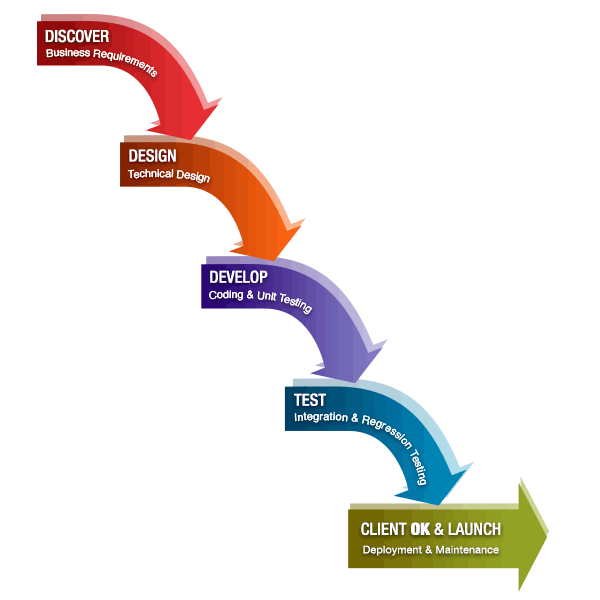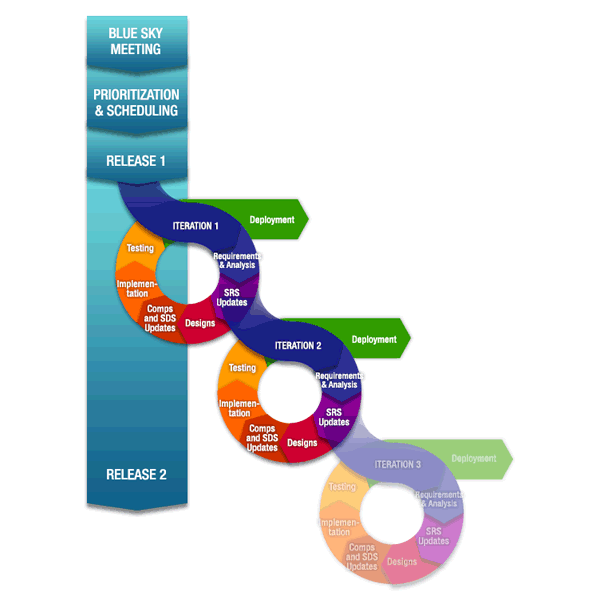Online of offline, in the realm of software development, there are a number of different approaches are given by companies. Among them, there are two broad categories that offer distinct methodologies and philosophies.
There are commonly referred to "Waterfall" and "Agile" development. Both of these are usable, mature methodologies that have been involved in software development projects for a long time.
As with anything in software development, they both have their own pros and cons. Depending on which companies you've approached, they may give you the option to choose. If not, they may have strong preference for one over the other.
Some even exclusively offer only one approach.
So what are those two terms mean? And which one is better for you?
The Difference Is The Approach To The Problem
One question can have many answers and there are many questions that share one answer. Among the types of questions, there could be many ways to approach their answer(s). The same goes to "Waterfall" and "Agile" development.
The key difference between the two is the way they approach the solution to a given problem. Both are unique, and can you the same answer to your question. But their way of seeing the question differs.
Waterfall Method

Waterfall development is the most traditional method here. Its goal is to gather as much information as possible before the project begins. So any questions should be answered by detailing everything a client needs, all down to the final price. Everything is put upfront.
When the two parties have a deal, the agreement is then locked in place with a sign of contract.
This method enables developers to know how much time and resources they need, and how long it will take for the project to finish. Management will be easier, and things should go more smoothly on their side. On the client's side, they have everything they need to know and they can save themselves from worries.
The advantages:
- Development lifecycle is known before the project beings, making planning and designing more straightforward.
- Progress is more easily measured.
- Development will be faster and easier.
- Clients won't have to be strictly involved.
- The product can be designed more completely and carefully.
The disadvantages:
- Clients must give out everything they want before the project begins. This is one area that almost always falls short. Clients may not fully know what they want when they first approach the developers. On the developers' side, gathering and documenting requirements in a way that is meaningful to clients is often the most difficult part of software development. Occasionally, clients are intimidated by details and the requirements, making them to back off.
- Customers can be dissatisfied with the result because the deliverables are all based upon prior requirements. And because customers may not see the end result until the it's almost finished, by that time, changes can be difficult to implement.
Agile Method

In Agile development, things are more loose: it is an iterative, team-based approach to development that involves more patience than strict rules. Project can begin when the two parties agree on at least one thing, and that is teamwork. Development proceeds in tandem with client's feedback, and future changes are all ongoing.
Rather than creating tasks and schedules, all phases In Agile are "time-boxed” into what called "sprints." Each of this sprint has a defined duration with a running list of deliverables, planned at the start of the sprint.
This method enables a more flexible product which the client may find more interesting. For example, the client may add one or two new features into a product in the middle of the progress. What makes this method appealing is that clients can have more involvement into the product they want, not what the developers tend to want.
The advantages:
- Clients have opportunities to see the work being delivered, and have the power to make decisions and changes throughout the project's development.
- The sense of ownership is felt by clients because they themselves have to work extensively with the developers.
- Having the basic working version of the software before the project finishes.
- Development is more user-focused.
The disadvantages:
- High degree of client's involvement can present problems for those that don't have interest or time for participation.
- The final product depends heavily on teamwork and both parties' dedication.
- Time and cost can vary by margins if compared to the fixed waterfall.
- Frequent changes in can reduce the end result's quality.
Client Satisfaction
By understanding both, which method is best? To answer this, you need to first know what the project is.
In Waterfall method, clients must know everything upfront. Since the scope of the project is thoroughly detailed before the project even beings, clients get to know exactly what the product will be long before it's actually finished. At the end of the day, there won't be any changes.
For the most part, including the price, are all locked into place before the project beings. So there won't be any hidden surprises or additional charges.
Development should also be faster. For clients that are wants the project done quickly, this is the Waterfall's main advantage.
In Agile on the other hand, clients have more control, and this is its biggest advantage. Whenever the client have something new in mind, or changes their thoughts by thinking up of new features, or suddenly dislike something, they have the power to change the project's direction.
The Waterfall methodology won't give them this ability, and a change of mind here is a faulty. In Agile, any kind of changes or workaround is possible. So throughout the development, the client is in control.
Generally in Agile, there is more transparency and communication. With both parties keeping ongoing communication, this is a huge plus. If sudden and big changes can be kept to a minimum, the finished product can also often superior because rooms for improvements are always welcome at any time.
This tends to make clients more happy.
However, clients using Agile shouldn't concern about time or surprises. In the Agile method, anything can happen. Projects will progress a lot slower and may cost a lot more. And because the developers don't have to know everything their clients want in advance, the progress can slow down tremendously if communication isn't transparent. There are also chances that a project won't finish, because the development kept changing courses.
Furthermore, security and bugs tend to be a more frequent on Agile. Changes to an already implemented feature can affect another, creating holes that need to be patched. While developers are keen on these, some may pass unseen until moments to come.

Conclusion
Each methodology brings its own unique advantages. So if the question asks "which is better?", the answer will be "neither."
But both Waterfall and Agile development method's advantages can be put into a good use if both the developers and the clients know what the project in general should be. If clients can give a good explanation to what they wants, the progress for Agile development can speed up. The client can have the project faster with not that much additional costs or having to face unwanted problems. In the Waterfall, if the developers can summarize everything by explaining the details by giving them out in a meaningful way, clients may find this method appealing. At the end, user satisfaction won't be compromised.
Each approach also has a distinct advantage for certain types of clients.
For example, a client who wants a project to finish quickly and has a strict thought about pricing would prefer the Waterfall development. Meanwhile, a client who has more time and a more flexible budget, and also wants to be in control of the project, will generally prefer the Agile methodology.